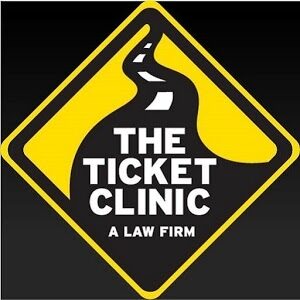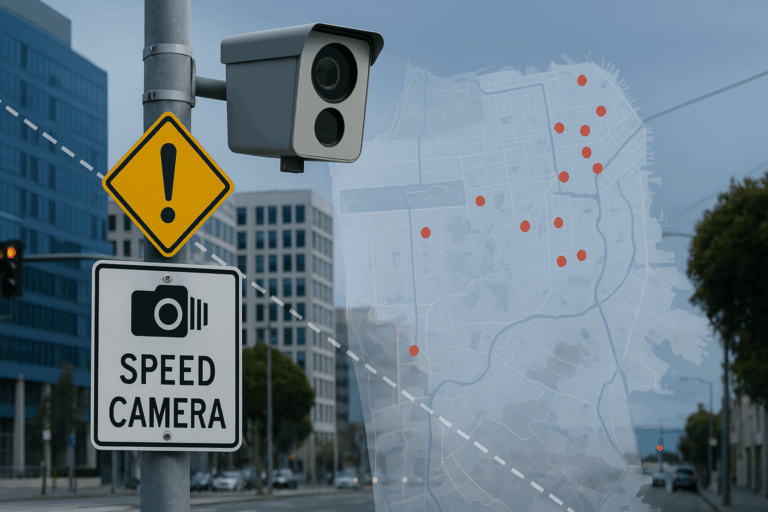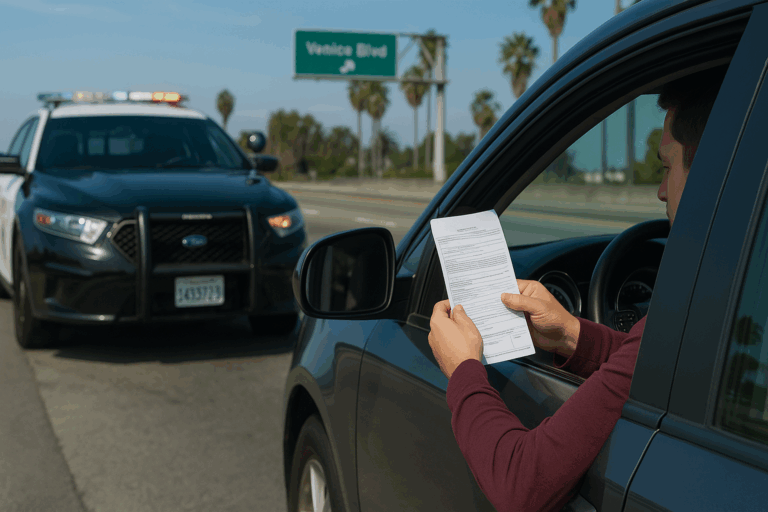Customising your ride in California can feel great — but some mods carry real risk of getting you pulled over or ticketed. Below, we answer the common questions about specific modifications and highlight the relevant California laws so you’ll know what crosses the line.
1. Can modifications to my exhaust/engine get me pulled over in California?
Yes—certain exhaust or engine mods can lead to a stop or citation.
What to watch for: Removing or bypassing mufflers, deleting catalytic converters, installing cut‑outs, or altering the exhaust so it’s significantly louder than stock.
Legal basis: Under California Vehicle Code § 27151 you cannot modify the exhaust system of a motor vehicle in a way “which will amplify or increase the noise emitted by the motor of the vehicle.” Furthermore, the law states that for most vehicles under 6,000 pounds GVWR the maximum allowed exhaust noise is 95 decibels (measured by SAE J1169).
What that means practically:
- If you have a muffler delete or huge tail‑pipe dump and the car is very loud you’re at risk.
- Even if the modification is legal in design, if your vehicle is emitting more than permitted noise you can still be stopped and cited.
- The citation may not be just a “fix‑it” (get it repaired) anymore — after January 1 2019 the stop can lead directly to a fine.
Tip: If you want to keep mods, check for a legal quiet exhaust system (with a certificate of compliance) or ensure your sound level stays under the legal threshold.
2. Can window tint get me pulled over in California?
Yes—illegal window tint is a common stop scenario.
What to watch for: Front side windows that are too dark, windshields with illegal film, rear windows without required mirrors, films that are reflective or have colours disallowed.
Legal basis: The tint laws are set out under California Vehicle Code § 26708 and others. For example: front side windows must allow at least 70% visible light (VLT) through; only the top 4‑5 inches of the windshield may be tinted above the AS‑1 line. Rear side windows and rear windshield may have darker tint, but only if the vehicle has dual side mirrors.
What that means practically:
- If you tint your front driver or passenger window too dark you’re inviting a stop.
- If your windshield has full dark film (not just the top strip), that may be illegal.
- If your rear tint is very dark but you lack both side mirrors you could be cited.
- Some local enforcement uses the tint stop to examine other violations.
Tip: Use a professional installer who knows CA laws, keep the installer’s certificate in your car, and keep front windows clear enough to satisfy 70% VLT.
3. Are Colored Or Tinted Lights Illegal In California? What about lights (headlights/underglow/neon)?
Yes — certain lighting modifications can get you pulled over.
What to watch for: Headlights that emit colours other than white or yellow (for front lamps); under‑car lighting or interior video screens distracting other drivers; aftermarket LED or strobe features not meeting legal standards; coloured lights visible from the front or rear that mimic emergency vehicles.
Legal basis: For headlight colour and installation details see California Vehicle Code § 25950 which states that the emitted light from all lamps and reflected light from reflectors visible from the front of a vehicle must be white or yellow.
What that means practically:
- Blue, purple, red or green headlights or front accent lights may lead to a citation.
- Custom underglow might be okay if not visible from the front or rear in restricted colours, but you still risk enforcement, especially if it imitates emergency lights.
- Interior video screens might be examined if they distract the driver or obstruct view.
Tip: Stick with white or yellow front lights, ensure installation height and angle is compliant, avoid lighting that could confuse other drivers or law enforcement.
4. Can a License plate mods or frame get me pulled over?
Yes — modifying your plate display or using frames that obscure letters can trigger stops.
What to watch for: License plate covers that make the numbers less visible, frames or shields that impair electronic recognition, failure to properly mount front & rear plates.
Legal basis: Under California Vehicle Code § 5201 you must have your plates securely fastened, clearly visible and legible, mounted at certain heights (rear plate between 12‑60 inches from ground, front plate not more than 60 inches) and you cannot use a casing or shield that obstructs recognition of the plate by law enforcement or toll/emission devices.
What that means practically:
- If you have a tinted plate cover that reduces legibility or obstructs a camera/toll sensor you could get a ticket.
- If your plate is dangling or obscured (e.g., by a custom frame), you’re inviting the stop.
- Even if the mod is aesthetic, if recognition is impaired, you violate the statute.
Tip: Use clear frames that don’t cover letters or tabs, ensure plate is clean and unobstructed, confirm mounting height and visibility.
5. Can Video screens inside my vehicle get me pulled over?
Yes — video monitors visible to the driver or passengers in a way that distracts the driver can lead to enforcement.
What to watch for: Large screens in the front view, monitors that face the driver or restrict rear view, aftermarket video installations not compliant with visibility/safety rules.
Legal basis: While there may not be a single statute that says “no video screens”, numerous sources highlight enforcement for “TV monitors” in vehicles because they obstruct view or distract the driver.
What that means practically:
- If you have a big screen mounted visibly in your line of sight you risk a stop for equipment violation or distraction.
- Rear‑seat entertainment systems are less risky if they do not obstruct driver view or reflect into the driver’s eyesight.
Tip: If you install a screen ensure it is mounted so that the driver’s view is not impeded, check local enforcement trends, and consider professional installation that complies with CA equipment rules.
6. Are suspension mods illegal in California? (lowering/raising)
Yes — extreme suspension modifications can lead to a pull‑over or citation, especially if the change impacts safety or visibility.
What to watch for: Vehicles extremely lowered so bumpers, lights or frames are out of spec; excessive lift making vehicle height illegal; modifications that impair view of lights or mirrors.
Legal basis: The statute California Vehicle Code § 24008.5 sets limits on frame height and body height (as referenced by legal commentary). Also, modifications that affect view or safety may violate other equipment and visibility rules.
What that means practically:
- If your car is so low that headlights are below legal height, or bumper placement violates regulations, you risk a stop.
- If someone lifts a vehicle excessively and lights or plate are out of spec, same risk.
- Local jurisdictions sometimes enforce more strictly for lowered cars (especially if it appears unsafe).
Tip: Before lowering or lifting check your vehicle’s light height, bumper clearance, mirror positioning, plate visibility, and ensure compliance with CA standards.
7. Are Radar/laser jammers illegal in California?
Yes — certain devices meant to evade speed enforcement can land you in trouble according to California Vehicle Code § 28150
What to watch for: Laser jammer devices, radar jammer equipment built into vehicle, or devices that interfere with police laser/radar guns.
Legal basis: Although the statute citations are more federal in many cases, commentary says that in California laser jammers are banned. Some lawful radar‑detector use may be permitted under federal law but local enforcement may act if the device is illegal under state or local rules.
What that means practically:
- If you’re caught with a laser jammer device built into your vehicle you could face equipment violation or seizure.
- Even if you think it’s “just an accessory,” law enforcement may interpret it as an attempt to evade enforcement.
- Having visible devices mounted in the windshield may also draw attention and trigger inspection for other mods.
Tip: Avoid aftermarket jammers that are explicitly illegal in California. If you’re unsure, research current state and local laws before installing.
Final thoughts
If you’re modifying your vehicle in California, you’re walking a fine line between style/performance and legal compliance. The stops and tickets often come not from “weird” mods alone, but from mods that impair safety, visibility, legality of lighting/plates, or increase noise/exhaust beyond legal thresholds.
A summary of laws for quick reference below:
| California Law | Summary |
|---|---|
| CVC § 27151 | Prohibits modifying the exhaust system of a motor vehicle in such a way “which will amplify or increase the noise emitted by the motor of the vehicle.” |
| CVC § 27156 | Prohibits the removal or disabling of required emission‑control equipment and requires that all aftermarket parts meet certain standards (particularly under California Air Resources Board, CARB). |
| CVC § 25950 | Relates to the colour of lights usable on a vehicle: “The emitted or reflected light for the lamps and reflectors … visible from the front of a vehicle shall be white or amber (yellow) in colour.” |
| CVC § 26708 | Governs obstruction of the driver’s view and use of windows, mirrors, and other equipment—including unlawful tinting or placing objects on/in windows that interfere with view. |
| CVC § 5201 | Requires license plates to be “securely fastened, plainly visible, and legible.” Obstructions, shields, covers that block letters/numbers or electronic recognition devices are prohibited. |
| CVC § 24008.5 | Limits on frame height (for certain vehicles) and modifications to the vehicle body or frame relative to height/clearance. |
| CVC § 4464 | Prohibits altering the original markings of a license plate (for instance changing colours, covering letters) or installing unapproved decorative modifications to the plate. |




The Ticket Clinic California
We are the largest law firm in the United States to focus soley on traffic-related offenses and traffic tickets. Over +35 years in business, we have developed deep knowledge about traffic court procedure and traffic laws Our goal is to help keep drivers stay informed about legal issues that could affect them on the road. In our blog content, we like to explore insights in traffic ticket trends and other related issues.



